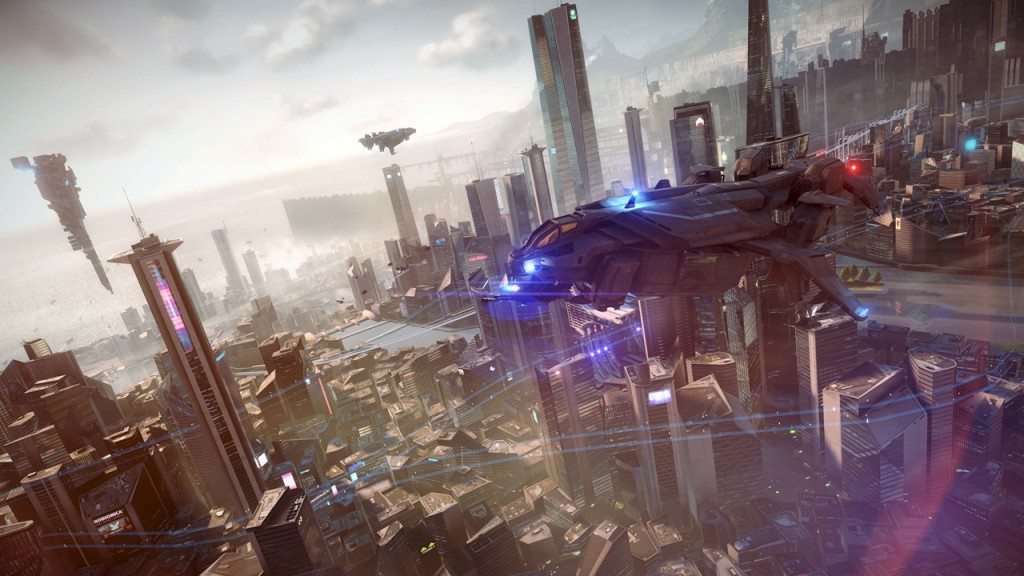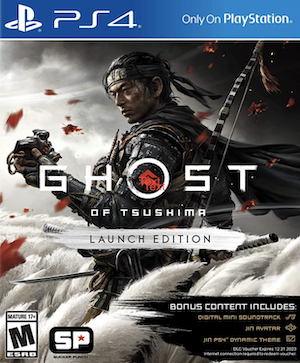
With the impending arrival of both the Xbox Scorpio and the Playstation 4 Neo, we’ve unexpectedly found ourselves in what may be the twilight years of the original PlayStation 4 and Xbox One. This is particularly surprising, considering that it’s been scarcely three years since these eighth-gen platforms were outed, and the simple fact of how well they’re selling (well, the PlayStation 4, at least.) What’s that saying…don’t try to fix what ain’t broken. With PlayStation 4 sales accelerating at a faster pace than the legendary PS2 , a mid-cycle refresh almost seems counter-intuitive for Microsoft and Sony.
Nevertheless, between 4K, VR, and rapid advances in mobile tech, there’s never been as much pressure on the console manufacturers to move beyond a static, long-term approach to hardware. The PlayStation 4 Neo and the Xbox Scorpio will undoubtedly deliver better visuals, higher framerates, and higher resolutions–with GTX 970-caliber graphics hardware onboard, that comes as little surprise. We’re going to see interesting things in the months to come, but let’s take this as an opportunity to look at the evolution of the PS4 and Xbox One so far, despite their curtailed lifespans.
The Launch Era
Both the PlayStation and Xbox One had fairly strong launches with a healthy mix of exclusives, multiplatforms, and downloadable titles. A peculiar aspect of the PlayStation 4 and Xbox One launch was the remarkable amount of staying power the PS3 and Xbox 360 continued to exert. Unlike the eighth-gen consoles which were much more cost-effective–Microsoft and Sony actually profited off the hardware this time–the PS3 and Xbox 360 were loss-leader products. The consoles were sold at a loss with the expectation that $60 dollar games would make up the difference. This gave Microsoft and Sony a lot more headroom to pack in the best hardware available circa 2005: Multicore processors when many people were still rocking Pentium 4s, and the very pick of Nvidia and AMD’s flagship GPU designs of the time allowed the Xbox 360 and PS3 to stay on for much longer than their predecessors. Because of this, and because of the massive install base accumulated over 7 years of being on the market, publishers in the early days of PS4 and Xbox One were forced to ship much of their AAA lineups across generations, until as late as last year.
An interesting consequence is that almost every single launch-era multiplatform on PS4 and Xbox One had a last-gen counterpart. From Battlefield 4 to Call of Duty: Ghosts to Assassin’s Creed: Black Flag, these were all titles that offered gameplay parity across generations. What was the eighth-gen difference, then? With developers having gotten to grips with PS4/Xbox One retail hardware relatively late, and with the need to support last-gen platforms, there wasn’t much space at the outset for eighth-gen titles to stretch their legs. The key differentiator in these early multiplats was a significantly higher rendering resolution. In games like Call of Duty: Ghosts, the 360 and PS3 were rendering at sub-HD–as low as 860×600 on PS3.
This, combined with the low texture resolution imposed by the paltry amount of available VRAM, led to a very murky presentation. Even when the majority of core assets were identical, the PS4 at least made for a night and day difference in terms of image quality, with a solid 1080p output in many launch titles, though the same couldn’t quite be said for the Xbox One. With developers still getting used to the new hardware–and the Xbox One’s peculiar ESRAM setup in particular–a lower-res output became an easy way to reclaim perfomance vis-a-vis the PlayStation 4, with many titles like Black Flag running at 900p, and Ghosts handing in a decidedly last-gen 720p output. And that, is more or less how Resolutiongate began.
Launch era exclusives are always a challenge: Developers don’t get a clear picture of the final hardware spec for a console until shortly before it gets outed; Early dev kits aren’t a very reliable indicator. Nevertheless, launch exclusives are supposed to set the bar for quality. They need to do things that are simply not possible on older hardware. The point is, after all, to get people to jump ship to the new hardware. Exclusives need to showcase the strengths of the platforms, what’s possible. While launch-era multiplats were largely held back by the Xbox 360 and PS3, exclusives were another story altogether. Ryse and Killzone Shadowfall may not necessarily be great games in their own right (this goes double for Ryse), but they were definitely a comprehensive step up from the last-gen. From sub-surface scattering to physically-based rendering to tessellation, these games introduced us to many of the visual techniques that’d define eighth-gen visuals.
2014: Hitting the Performance Wall
The PlayStation 4 and Xbox One are inarguably a leap over the seventh-gen consoles in terms of their hardware spec. It’s hard for them not to be, compared to 2005-era hardware. However, at the end of the day, bargain-bin processors and mid-range AMD GPUs from circa 2012 are only going to get you so far. The PS4 and Xbox One ran into performance trouble fairly early on–this is one major factor in why we’re getting mid-cycle console refreshes. As games increased in complexity, as we went from last-gen ports to games like Shadow of Mordor that only incidentally run on older hardware, the strain started showing on both the PS4 and Xbox One.
This was especially evident in CPU-bound scenarios, where the eighth-gen consoles anemic Jaguar cores simply couldn’t cope. Assassin’s Creed: Unity is the most visible example, with performance plummeting to unplayable sub-30 FPS levels whenever crowds would gather. But many other seemingly solid performers hid this truth: Both the PS4 and Xbox One were severely CPU-bottlenecked. Benchmarks of the R9 270X–the closest thing to the PS4’s graphics component this side of the PC-console divide–show that, when paired with enough processing grunt, the 270X can hit 1080p/60 FPS in many 30 FPS titles on PS4, like Alien: Isolation and Middle-Earth: Shadow of Mordor. In addition to the CPU deficit, the Xbox One also had to contend with a lower-end graphics component and substantially lower memory bandwidth, thanks to Microsoft’s decision to opt for DDR3 memory. After realizing that no one really gave a damn about Kinect, Microsoft attempted to bridge the gap with an SDK update in June which allowed developers to use additional GPU cycles which were reserved for the Kinect’s motion-tracking camera. This freed up an additional 10 percent of graphics power. Bungie in particular mentioned that they were able to use this extra bit to get Destiny’s Xbox One version running on par with the PlayStation 4.
Sony, on the other hand, approached the issue from the other end: The PS3 had featured a powerful Cell processor paired with a relatively weak graphics component, which resulted in developers shifting a lot of the rendering work over to the Cell’s SPE cores. The PS4 was the opposite, with a weak CPU paired with a relatively powerful graphics component. The solution? GPU Compute. With the PS4’s SDK 2.0, Sony opened up the possibility of shifting compute workloads such as physics processing over to the GPU. Infamous: Second Son made excellent use of GPU Compute to display hundreds of thousands of particles onscreen at the same time.
Despite these efforts, both systems showed the strain in multiplat titles. Developers who’d showcased phenomenal in-game visuals at E3 2012 and 2013 found themselves making substantial visual cutbacks just to get their games up and running on the consoles. The downgrade controversy started with Watch Dogs: The game’s retail version looked nothing like the footage shown at E3 2012, with missing effects and a simplified lighting model among other cutbacks. Watch Dogs wasn’t, of course, the only title to suffer from drastic visual cutbacks–The Division is our latest offender–but the controversy only went on to highlight the weaknesses of eighth-gen hardware. Something had to be done.
Addressing Performance Constraints
Both console manufacturers recognized that CPU-side limitations were holding back their hardware. In an effort to free up every last ounce of available CPU power, SDK updates in 2015 gave developers the ability to utilize an additional processor core on each console, with only the eighth now reserved for OS functionality. This, along with a marginally higher clockspeed resulted in the Xbox One making up some of the deficit compared to the PS4, in CPU-bound scenarios. While it’s a dreadfully laggy mess on both platforms, Unity is the best-case for this, with the Xbox One handing in marginally higher framerates across the board.
Another development in 2015 was the advent of low-level APIs, particularly DirectX 12 and Vulkan. We’ve know about the impact that low-level APIs would have in the PC gaming space: Not having to deal with a thick API layer can reduce CPU overhead, which can translate into better framerates, especially if you’re rocking a weaker processor. Consoles could stand to gain a lot from this–after all, weren’t CPU constraints the major factor behind performance issues this generation? But jumping ship to DX12 won’t help actually matters on console because devs can already “code to the metal” without having to deal with a bloated OS like Windows. DICE’s Battlefront reboot was outed as the very first DX12 title on the Xbox One, but even Phil Spencer went on record to say that the new API wouldn’t translate into meaningful performance gains. The real reason behind the shift to DX12 was to better integrate Microsoft’s gaming ecosystem. Xbox means the Xbox One, PC, and mobile now. Just how well Microsoft’s UWP strategy will pan out remains to be seen, but using a common API could make it easier for developers to deploy games and other software across the spectrum of Xbox products.
Short of a hardware update, there’s only so much that be done to get meaningfully better console experiences. As time passed, developers increasingly turned toward novel solutions to get the very best out the limited console hardware. Dynamic resolution scaling has been employed to great effect, particularly on Xbox One. While this is a technique that’s been around for a while now–at least since 2011’s Rage, the Xbox One’s position as a console that’s close, but not quite able to deliver a smooth 1080p in most games, made it a natural fit. A dynamic framebuffer has the advantage of offering players a relatively sharp image when they’re out of the action, and a smooth framerate when they’re in the middle of combat.
As seen in Call of Duty: Ghosts horrid, upscaled 720p output, it’s not a good idea to use a low, fixed resolution when there are enough scenes that offer enough performance headroom to reach a higher resolution. Dynamic scaling has also been deployed on the PlayStation 4–as seen in Doom–but the sizeable GPU advantage that Sony’s platform has means that, in a given game, the PS4 will spend much more time at or near 1080p. Remedy’s temporal reconstruction solution seen in Quantum Break, where successive 720p frames are combined and upscaled to 1080p, is yet another example of a developer trying to creatively make the most of hardware limitations. Of course there are always exceptions, and determined first-party developers who know the ins and outs of their platforms can make magic happen: Uncharted 4 is one of the best looking games this generation on any platform and it hands in a very clean 1080p output, backed by a comprehensive temporal AA solution. But how far can that bar be pushed until you really need new hardware?
The arrival of the PS4 Neo and Xbox Scorpio is big news for a lot of different people: high-end PC gamers won’t have to whine about post-E3 downgrades anymore. People that’ve clung to their PS3s and Xbox 360s having a genuinely compelling hardware update on their hands. 4K TV owners will finally have an alternative to stowing their PC rig behind their TV sets. And, as for those that bought a PS4 and Xbox One, both Sony and Microsoft have made it abundantly clear that both platforms will get continued support in the years to come.


















Share Your Thoughts Below (Always follow our comments policy!)